
by Bob | Apr 20, 2014 | Life notes
If you haven’t heard of the Oculus Rift, it’s a newly developed 3D virtual reality device that sits on your face like a large pair of goggles. It’s said to be immersive and quite amazing even at this early stage. It garnered a great deal of attention a few months ago, and then, when Facebook bought it for 2 billion dollars, even more press.
Without personally having the Oculus experience it’s hard to know what the excitement is all about. But clearly something is going on. Then I read this article about an elderly woman diagnosed with cancer, and having a wonderful experience just walking through a demo of a Tuscany village.
The story points the way to future possible uses of such technology beyond gaming. And then I got to imagining a care home where instead of a room full of elderly folks staring at Jeopardy on TV, all the old folks are sitting around with Oculus goggles being tended to by robots made in Japan. They are swaying, and oohing and aahing at the worlds they are experiencing. The robots put ice tea in their hands but it’s not used to wash down a fistful of medications.
Gosh, am I imagining my own future? Could be worse, I guess.
by Bob | Nov 3, 2013 | Life notes, Local Tech Notes, Skeptic
I wanted to share a small victory. A relative had proclaimed herself an anti-GMO person to my consternation. She started sending me links, all of which I refuted. Then she told me she’d watched these 2 movies: Genetic Roulette and Genetic Chili, which, so help me, I watched on a Sunday afternoon.
After I watched Genetic Roulette, I sent her to this page which refutes point by point the assertions from the first film (actually from the self-published book that the film was based on).
Then, I watched the second one, Genetic Chili and saw it was directed by the same guy. So, I looked him up on Wikipedia. From his entry:
A variety of American organic food companies see Smith “as a champion for their interests”,[1] and Smith’s supporters describe him as “arguably the world’s foremost expert on the topic of genetically modified foods”.[20] In contrast, Michael Specter, writing in The New Yorker, reported that Smith was presented as a “scientist” on The Dr. Oz Show despite his lack of any scientific experience or relevant qualifications.[3] Bruce Chassy, a molecular biologist and food scientist, wrote to the show arguing that Smith’s “only professional experience prior to taking up his crusade against biotechnology is as a ballroom-dance teacher, yogic flying instructor, and political candidate for the Maharishi cult’s natural-law party.”[3].
I also noted that much of the assertions in the second movie were based on the findings of debunked studies by French microbiologist Gilles-Eric Séralini
After that, she wrote these magic words: “You are starting to persuade me. The de-bunking of Genetic Roulette is pretty thorough.”
Yes! OK, it’s not definitive. It’s just a start. But hey, any movement toward the light I will take. The rest, now that she has the skeptical spark, is up to her.
by Bob | Sep 13, 2013 | Life notes
….all the live long day.
So I am finally getting forced to make my IPad more useable as a work machine. My MacBook Pro is in the shop. The Dell laptop where we do bookkeeping and other Windows specific tasks is also in the shop (well actually, different shops), both with weird trackpad/bluetooth mouse issues. Coincidence? I think not! It must be a curse cast upon me. If my IPad goes south then I will be absolutely convinced.
In the meantime, I actually have discovered I can do most everything on the IPad, especially with the bluetooth keyboard attached. I may get used to it. It’s lighter, in some ways less distracting since there’s only one all on the screen at a time. When I’m working on my MacBook it’s usually attached to a second screen so I have multiple things going on at once.
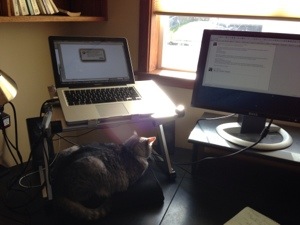
My normal work environment (plus cat)
by Bob | Jul 26, 2013 | Life notes, Skeptic
Last week I posted my initial impressions and an overall context for The Amazing Meeting that took place in July in Las Vegas.
It’s important for me to try and record some of the most important lessons from the 4 days of workshops, presentations and hallway conversation so that those ideas do not slip away completely. As a “First TAMer” (I have the button to prove it), I was a bit overwhelmed by the sheer volume of information, dazzled by seeing people whose words I’d read and podcasts I’d listened to for so many years, and the simple pleasure of being enveloped in a “family” of over 1,000 like-minded individuals from around the world.
While all the speakers had unique perspectives on the concepts of skepticism and critical thinking, a few overriding themes seem to appear throughout the conference and I will start there:
Belief is Powerful
Most advocates of belief systems that have little or no objective evidence to support them are sincere. They are convinced the “woo works.” The self-deception of believers was demonstrated multiple times at TAM where people who professed to having some unique power failed a carefully crafted test of that power and yet, remained convinced they still had the power. They always came up with rationalizations as to why they failed this time, as if the test was an easily ignorable anomaly.
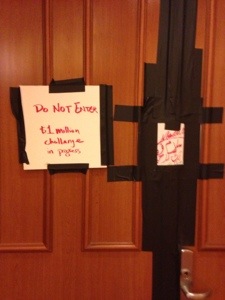
The Sealed Room With 3 Objects
What Was Revealed?
We saw this demonstrated live on the last night of the conference during the “1 Million Dollar Challenge.” The James Randi Educational Foundation offers to pay anyone 1 million dollars if they can pass a mutually agreed upon test. Each year the Foundation goes through a rigorous screening process to find a worthy candidate and then work out with that candidate a test of his or her power. They make every effort to be sure the candidate understands the nature of the test, agrees to the criteria, and is convinced they can pass.
This year was unusual in that the candidate, who professed to have the power of remote vision (being able to see objects in another space at any distance) was in Algeria. The challenge was demonstrated live, over the phone, the candidate speaking through a chosen helper on stage, acting as his interpreter. He was supposed to be able to see which three objects out of 20 or so that everyone had agreed upon earlier, were placed in a room 3 days earlier and the room sealed. Needless to say, when the room was opened and the objects revealed he had gotten zero correct. But when asked if he still believed he had the power of remote vision, he said yes. He had proven it many times to himself and to his friends, family and others in his community and that this one test was flawed, in spite of having many times agreed to everything and assuring everyone he would not fail.
Do Not Blame the Victim
Skeptics tend to judge, even sometimes laugh at people they see as being fooled by false or unproven ideas. However, everyone is susceptible to being fooled, especially people who think they are invulnerable (scientists, magicians, journalists, for example). The desire to believe is powerful and innate. Charismatic and forceful leaders are able to convince people to become adherents to their systems no matter how absurd those systems may seem to outsiders and critical thinkers. And self-deception can prove the most pernicious mind trick. Just read the sad story of Linus Pauling and the vitamin phenomenon, or Steve Jobs delaying medical treatment for pancreatic cancer in favor of CAM.
So to the fakers, those who consciously and cynically try to defraud people, show no mercy in exposing and ridiculing their practices. But tread more lightly on the true believers as they are us.
There is Plenty of Harm
Skeptics of skepticism may feel that things like Complementary and Alternative Medicine (CAM), religious beliefs, and other areas of thought are harmless, sometimes helpful and people should be left alone to believe what they want. That’s fine until belief in concepts start inflicting harm, even death on the believers and others. Examples of the cost in both dollars and human suffering may be found atsWhat’s the Harm. Or listen to this bit of commentary from On the Media about Jenny McCarthy’s new gig on The View.

“Holy Man” blessing a child
in a village in India.
An investigation and intervention
by skeptic Sanal Edamaruku.
The harm to humanity in lost billions and lost or damaged lives means that learning to help fight against dubious claims and fraud is a worthwhile pursuit. Of the many things I learned at TAM, resources and tactics I was unaware of should prove valuable as I try to become more active in the skeptical community.
Stay tuned for Part 3.
by Bob | Jul 18, 2013 | Life notes, Skeptic
I had the good fortune, OK, the good foresight to send myself to The Amazing Meeting (TAM) in Las Vegas this year. For the uninitiated TAM is the largest gathering of skeptics anywhere, put on by the James Randi Educational Foundation (JREF). What’s a skeptic? Who is James Randi? Some context may be necessary. That’s why this is Part 1.
A skeptic in this context is someone who tries to make decisions about reality based on evidence and reason. So, for example, if someone makes a claim about the efficacy of an herb for curing colds, a skeptic would look for scientific evidence to support this claim and not accept it on “faith”. Typically, skeptics cast a cold eye on what they call “woo”: Ghosts, cold readings, tarot, telekinesis, etc. This is not to say they wouldn’t “believe” in these things. A skeptic would gladly accept these as real if some hard scientific facts were to be presented. A skeptic keeps an open mind and is willing to change that mind given convincing new evidence. For a more comprehensive description in this context see the Media Guide to Skepticism.
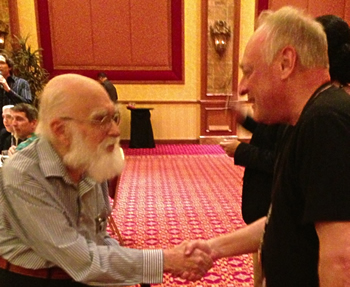
James Randi and Me Schmoozing.
Photo by Kevin Hoover.
James “the Amazing” Randi, as he was known in his performing days, is a magician and skeptical investigator who has spent decades promoting the cause of critical thinking and, as this year’s TAM slogan says: “Fighting the Fakers”. He has famously shed light on the “faith healer” Peter Popoff and the spoon bending of Uri Geller among many other adventures.
I got introduced to the concept of skepticism as a movement as so many others have, by listening to the podcast The Skeptics Guide to the Universe. I’ve been listening to this podcast for several years, usually while I worked out at the gym on Sunday mornings, but how I came across it originally is lost in the foggy mists of my memory.
So with all that out of the way, how was TAM? Well, for one, I did not leave the hotel once I checked in until I checked out 5 days later. It was too hot outside (I checked the weather on my phone) and there was way too much to do indoors from 8 AM to 11 PM or later each day.
You can get an idea of the scope of the program by perusing the schedule. I attended half of the workshops on Thursday and would have attended them all, but there were always 2 running simultaneously (unfortunately I did not have a spirit-self that would allow me to be in two places at once). And I managed to attend almost every session over the following 3 days, which meant sitting in a large conference hall for sometimes 4 hours at a time. I also, had tickets to nearly every extra event held in the evening, one of which had bacon, donuts, loud music and strippers! No need to see the rest of Las Vegas after all.
Clearly I had a great time. I felt immersed in a really long, stimulating intellectual conversation with a large list of very impressive people with diverse disciplines from magicians to philosophers and journalists. And that was just the official program. Meeting others from all over the world over lunch, dinner, extra events and in the hallway was as much fun as listening to speakers. I came away truly inspired, energized and full of ideas of ways to improve my own critical thinking skills and ways to help promote the concepts and programs of the skeptical community. I am still assimilating all I experienced, and will be for quite a long while. But the best way to do that, I think will be to take action where I can.
More later.
by Bob | Jul 17, 2013 | Life notes, Skeptic
In my last post I mentioned a conversation I got in to with the cab driver who helped me Escape from Hell!, also known as the South Point Hotel. The cabbie was genial and talkative. So I asked him how long he’d been driving cab. His story juxtaposed against the Las Vegas world of gamblers, glitz and high priced entertainment put a poignant spin on my visit.
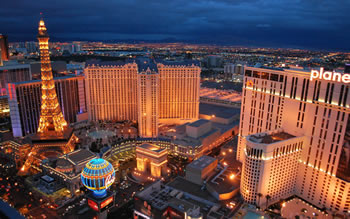 He’d been driving cab for about six months. He’d been laid off from the hotel he’d been working at for several years. He had 15 years experience in hotel service but had only moved to Las Vegas a few years ago so others, also laid off, had seniority over him as far as getting called back to work.
He’d been driving cab for about six months. He’d been laid off from the hotel he’d been working at for several years. He had 15 years experience in hotel service but had only moved to Las Vegas a few years ago so others, also laid off, had seniority over him as far as getting called back to work.
So, rather than sit idle at home, he learned to drive a cab. It took months of training. He had to pass a rigorous test. And now, he has to compete with 7,000 other cabbies to earn enough each day to take home some profit. He showed me his ride sheet. He’d only had 9 fares so far and he’d been working 6 hours already. He works 12 hours/day 6 days/week. He’d been in the cab line waiting his turn to pick up a fare for over 2 hours. He said the competition for fares was brutal, especially along the strip where cabs circled like vultures looking for riders. He preferred
the orderly wait outside the hotels.
Now maybe he was giving me a line in order to get earn a sympathy tip. After all, I was in the land of hucksters and hustlers. But his story had the ring of truth from the evidence I saw. And as I flew out over the vast tracts that surround the city, filled with identical houses all with the same brown roofs sprawling across the desert, I imagined them filled with workers struggling to pay the rent or mortgage, in the service of the people throwing money at rigged games of chance, hookers, booze and all you can eat buffets.
I gave him a 20% tip. After all, I’m also part of the 99%.

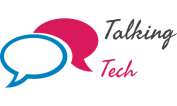




 He’d been driving cab for about six months. He’d been laid off from the hotel he’d been working at for several years. He had 15 years experience in hotel service but had only moved to Las Vegas a few years ago so others, also laid off, had seniority over him as far as getting called back to work.
He’d been driving cab for about six months. He’d been laid off from the hotel he’d been working at for several years. He had 15 years experience in hotel service but had only moved to Las Vegas a few years ago so others, also laid off, had seniority over him as far as getting called back to work.